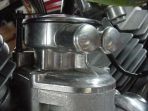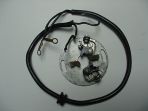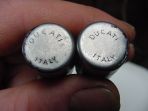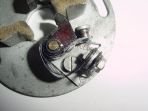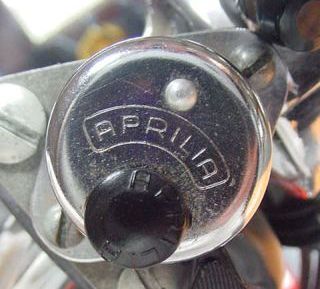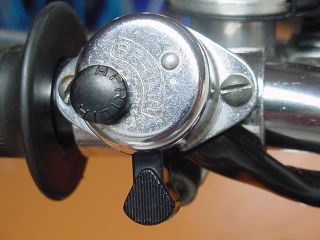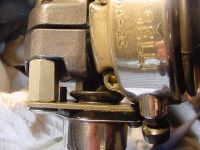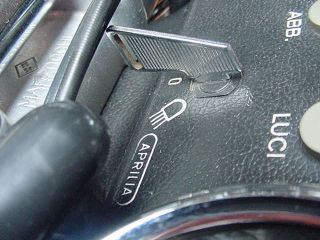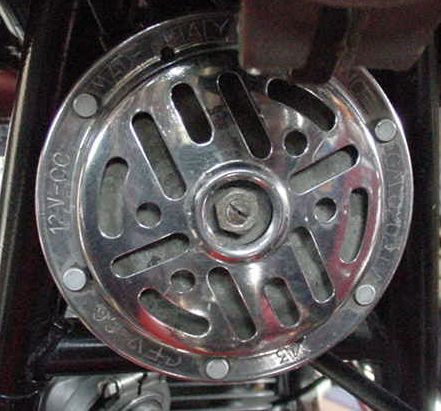Headlamp
Aprilia
headlamps were fitted to all the 750GT models. For the European and
Australian markets they were of a semi sealed beam type. The beam was
adjustable via screws in the front of the rim.
 |
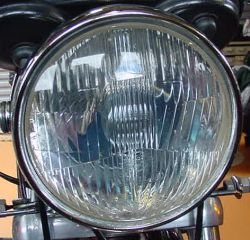 |
Click
on the headlamp front image for a close up of the Aprilia greyhound
logo.One of the headlamp beam adjuster screws is visible in the side
view. This lamp has been replated and the mounting ears which were
originally riveted on were removed and replaced with button head screws. |
Indicators or Blinkers
Indicators came
in the crate with the bike and were at the time in some markets
optional. Some owners still have them. They were made by Aprilia.
Inside the headlamp was a simple 2 wire terminal block for the front
pair. The rear pair were accommodated by way of colour coded positions
in the fuse box, fitting is a simple affair. Being made of cast metal
then chromed they are heavy and can fracture the rear mount wire. The
US models had a different rear mount and the '72 model bikes had a
slightly different front mounting wire to the later models.

















